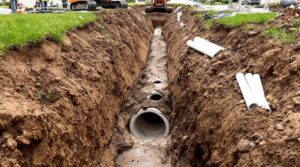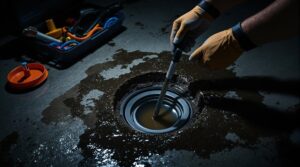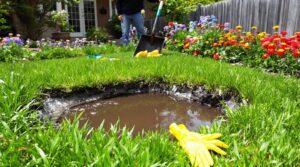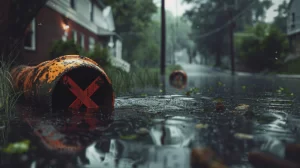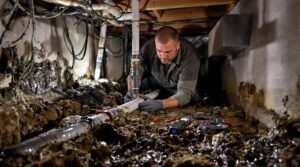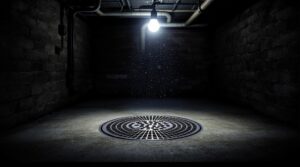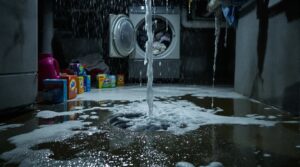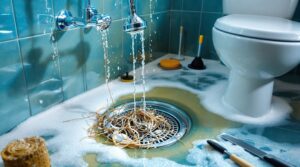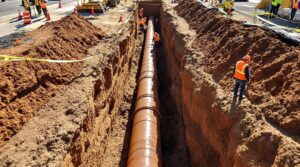Trenchless sewer line replacement methods like CIPP (Cured-In-Place Pipe) and pipe bursting offer the most economical solution, typically costing 30-50% less than traditional excavation. These techniques minimize property disruption and reduce labor costs while providing durable results. PVC or ABS pipes, ranging from $3-$11 per linear foot, represent the most cost-effective materials. Strategic timing of repairs and professional assessment can identify additional opportunities to maximize cost savings throughout the project lifecycle.
Key Takeaways
- Choose PVC or ABS pipes, which cost $3-$11 per linear foot, making them the most economical material options for sewer line replacement.
- Opt for trenchless methods like CIPP, which can save 30-50% compared to traditional excavation techniques due to reduced labor costs.
- Consider DIY repairs for minor issues if you have technical skills, but ensure proper knowledge to avoid costly mistakes.
- Conduct regular maintenance to catch problems early, preventing the need for complete replacement and reducing long-term expenses.
- Schedule professional assessments to identify salvageable parts and determine if partial replacements can suffice instead of full replacement.
Understanding Sewer Line Replacement Methods
Today's homeowners seeking sewer line repairs have access to several trenchless methods that minimize excavation and property disruption.
These advanced techniques offer cost-effective alternatives to traditional excavation methods while maintaining structural integrity. Video inspection techniques ensure proper assessment of pipe conditions before and after repairs.
CIPP benefits include creating a new pipe within the existing one using epoxy-impregnated fabric, which cures through steam or UV light application.
Pull In Place methods utilize two access points to insert pre-shaped liners, offering rapid 20-minute curing times and enhanced durability.
Pipe Bursting completely replaces damaged lines by breaking through existing pipes while simultaneously installing new ones, allowing for increased diameter when needed.
Sliplining advantages encompass quick installation and minimal disruption, though this method reduces pipe diameter.
The process involves inserting smaller HDPE, FRP, or PVC pipes into existing lines, with subsequent grouting to fill remaining voids.
Each method presents unique solutions depending on specific repair requirements and site conditions.
Cost Comparison of Different Replacement Options
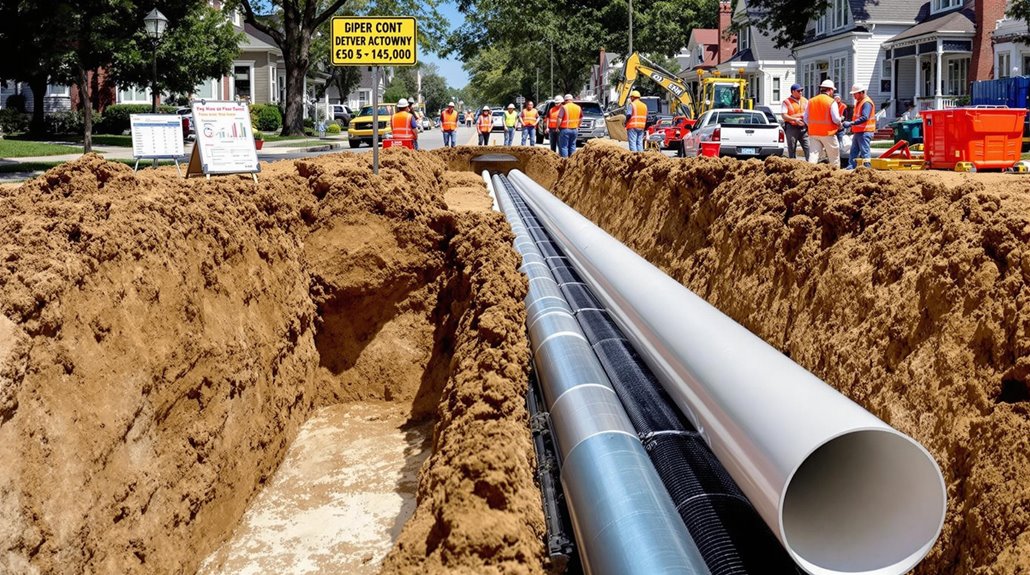
When comparing traditional excavation to trenchless methods for sewer line replacement, the latter typically costs 30-50% less due to reduced labor and restoration expenses.
The material costs between methods vary markedly, with traditional replacement requiring extensive piping materials plus backfill, while trenchless approaches primarily involve specialized equipment rental and pipe liners. Repairs using sewer liner can range from $50 to $250 per linear foot depending on pipe specifications.
Trenchless technologies demonstrate superior cost-effectiveness through minimal surface disruption, faster completion times, and lower long-term maintenance requirements.
Traditional Vs Trenchless Methods
Homeowners facing sewer line replacement must weigh the costs and benefits of traditional excavation methods against newer trenchless technologies. While traditional methods cost $50-250 per linear foot, trenchless alternatives range from $135-190 per linear foot but require minimal excavation, potentially improving cost efficiency and project timelines. Additionally, homeowners should consider long-term impacts when evaluating these options, as trenchless methods often lead to less landscape disruption and reduced restoration costs. It’s crucial to obtain a detailed cost breakdown for sewer line replacement, as this can provide insight into potential hidden expenses associated with each method. Ultimately, making an informed decision hinges on carefully assessing both immediate costs and future implications.
| Comparison Factor | Traditional | Trenchless |
|---|---|---|
| Cost/Linear Foot | $50-250 | $135-190 |
| Total Avg. Cost | $2,000-10,000 | $1,900-6,000 |
| Excavation Needed | Extensive | Minimal |
The choice between methods often depends on specific circumstances. Traditional replacement typically costs more when factoring in extensive excavation ($30-70 per cubic foot) and landscape restoration. Trenchless methods, while having higher per-foot costs, can prove more economical by minimizing collateral damage and reducing labor hours. Common trenchless techniques like pipe bursting cost between $60-200 per linear foot.
Material Cost Breakdown
A thorough assessment of sewer line replacement materials reveals significant cost variations across different pipe options.
Regarding material affordability, PVC and ABS pipes range from $3-$11 per linear foot, with total installation costs between $2,000-$10,000 for 40 linear feet. These options represent the most economical choices for replacement projects.
Cast iron and copper pipes, while more durable, command substantially higher prices.
Cast iron costs $20-$75 per linear foot, with 40-foot installations ranging from $8,000-$30,000. Copper, the most expensive option, runs $30-$85 per linear foot, totaling $12,000-$34,000 for similar installations.
Installation considerations include PVC and ABS being lightweight and easier to work with, while cast iron and copper require additional labor and equipment, contributing to higher overall costs.
Trenchless Technology: A Cost-Effective Solution
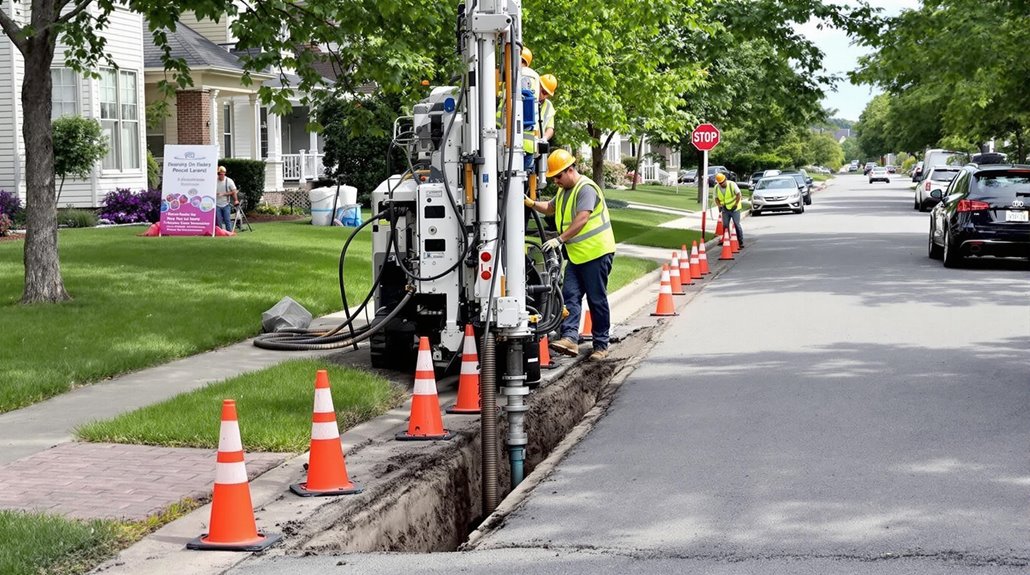
Modern trenchless pipe bursting technology represents a cost-effective alternative to traditional sewer line replacement, with specialized equipment reducing labor hours and minimizing expensive surface restoration.
The streamlined process requires fewer workers and less time while preventing costly landscape and hardscape damage that typically accounts for 30-50% of traditional replacement costs.
Advanced trenchless equipment, though requiring initial investment, enables contractors to complete projects more efficiently and pass the operational savings to property owners.
Pipe Bursting Cost Benefits
When considering sewer line replacement options, pipe bursting technology emerges as a cost-effective trenchless solution that delivers significant financial benefits. The method's efficiency manifests through reduced labor requirements and minimal property disruption, resulting in substantial cost savings compared to traditional excavation methods.
| Cost Factor | Pipe Bursting | Traditional Method |
|---|---|---|
| Labor Costs | $80-250/ft | $50-250/ft |
| Property Damage | Minimal | Extensive |
| Restoration Needs | Limited | Significant |
| Project Duration | Shorter | Longer |
| Long-term Savings | Higher | Lower |
The trenchless benefits of pipe bursting extend beyond immediate cost reduction. Property owners can expect long-term savings through enhanced pipe durability and reduced maintenance requirements. For deep-lying pipes, the technology can yield savings up to $10,000 compared to conventional replacement methods, while eliminating extensive landscaping and restoration expenses.
Modern Equipment Saves Money
Trenchless technology equipment represents a significant advancement in cost-effective sewer line replacement methods.
Modern technology utilized in these systems includes sophisticated inspection cameras, pipe bursting equipment, and epoxy resin-lined materials that substantially reduce labor costs while delivering superior results.
The implementation of advanced equipment yields measurable cost savings through multiple channels.
High-density polyethylene (HDPE) pipes and seamless liners installed via trenchless methods offer extended longevity, minimizing future repair expenses.
The swift installation process reduces operational downtime, particularly beneficial for commercial properties.
Additionally, the precision of modern inspection equipment enables targeted repairs, eliminating unnecessary excavation and associated restoration costs.
This technology-driven approach has revolutionized sewer line replacement since its introduction in the 1970s, proving its economic advantage over traditional methods.
Less Property Damage Impact
Traditional excavation methods for sewer line replacement often result in extensive property damage, whereas trenchless technology notably minimizes these impacts through precise, targeted interventions.
The process substantially reduces excavation requirements, resulting in minimized disruption to landscaping, driveways, and structural elements.
Property preservation is achieved through specialized techniques that require only small access points rather than extensive trenching. This approach maintains the aesthetic integrity of the property while completing repairs efficiently, typically within a single day.
The method also eliminates costly restoration work associated with traditional excavation, including landscape rehabilitation and structural repairs.
Additionally, trenchless technology enhances safety by reducing exposure to hazardous materials and minimizing the risk of utility line damage during the replacement process.
Material Choices and Their Impact on Budget
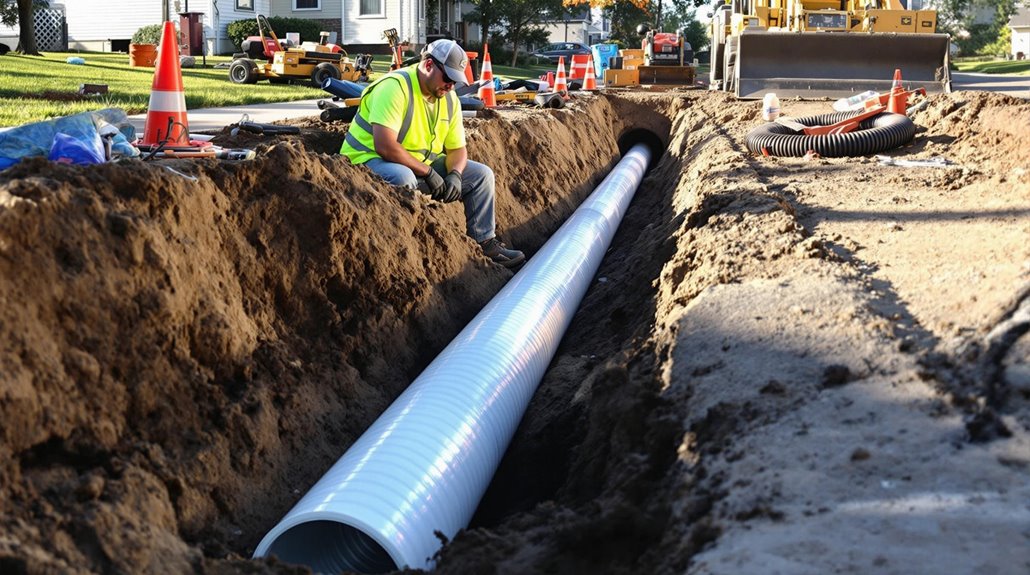
Selecting the appropriate material for sewer line replacement markedly impacts the overall project budget and long-term maintenance costs. Among cost-effective options, PVC stands as the industry standard, ranging from $3-$8 per linear foot, offering superior material longevity and straightforward installation.
PEX tubing ($2-$10) and ABS ($3-$11) present viable alternatives, particularly in regions with extreme temperature variations.
While traditional materials like copper ($30-$80) and cast iron ($75-$150) offer durability, their higher costs and potential vulnerabilities to corrosion often make them less practical choices.
Project planning should consider local material availability and specific environmental factors, such as soil chemistry and groundwater conditions.
Modern installation methods like CIPP ($90-$250) and spin-casting ($80-$250) command premium prices but can reduce overall costs by minimizing excavation requirements and property restoration expenses, particularly for longer sewer lines.
Factors That Affect Sewer Line Replacement Costs
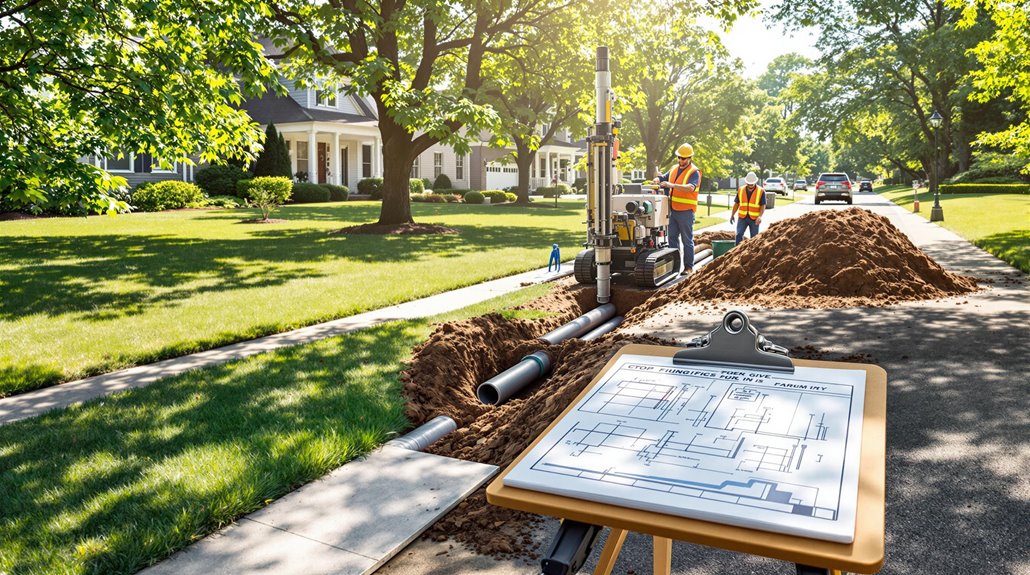
The complexity of sewer line replacement costs stems from multiple interrelated factors that considerably influence the final project expense.
Distance plays a primary role in cost variation, with longer lines requiring additional materials and labor. The proximity between the house and street hookup substantially impacts overall expenditure, particularly when obstacles like trees or concrete structures necessitate specialized excavation.
Labor impact represents a substantial portion of the budget, with professional plumbers charging between $150 to $500 per hour. Regulatory requirements, including permits and mandatory inspections, add another layer of expense.
The excavation process and subsequent restoration work constitute considerable cost factors, though trenchless methods can minimize these expenses. Property restoration, including landscaping and backfill operations, must be factored into the total project cost.
Understanding these variables enables property owners to better anticipate and plan for the financial implications of sewer line replacement.
Money-Saving Tips for Sewer Line Projects
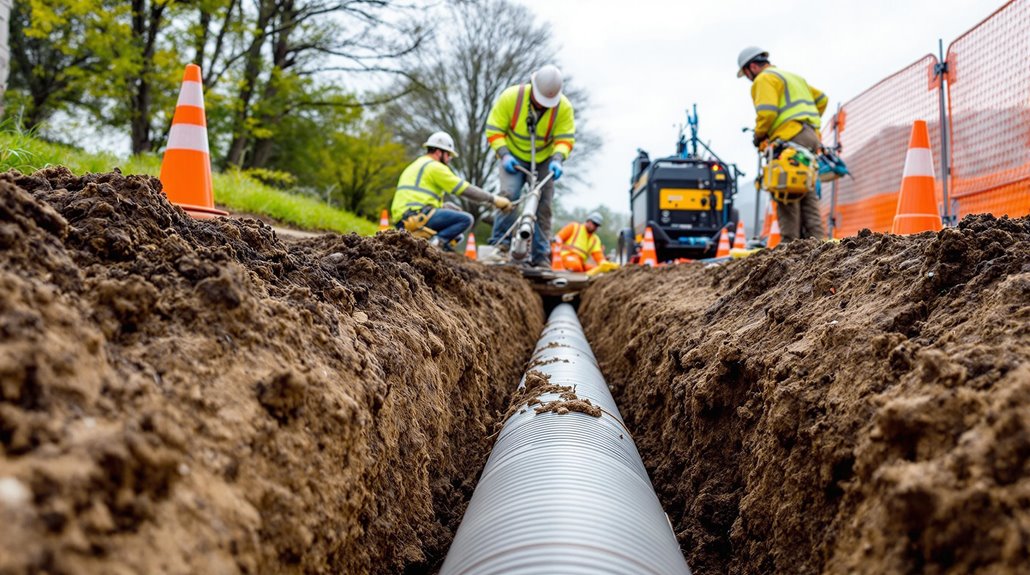
Savvy homeowners can considerably reduce sewer line replacement costs through strategic planning and informed decision-making.
Implementing regular preventative maintenance helps identify potential issues early, minimizing the need for emergency funds and extensive repairs.
Professional consultation determines whether cost-effective trenchless methods, such as pipe bursting or relining, are suitable alternatives to traditional excavation.
For minor issues, DIY repairs present viable cost-saving opportunities, particularly for small leaks and blockages.
However, proper assessment of one's technical abilities is essential before attempting repairs.
Trenchless sewer lining, costing 60-70% less than open-cut methods, offers significant savings through reduced labor and restoration expenses.
The Cured-In-Place-Pipe (CIPP) technique proves especially economical for structurally sound existing pipes.
Homeowners should explore payment plans with qualified contractors while maintaining emergency funds for unexpected issues.
Professional expertise remains fundamental for determining the most cost-effective approach based on specific circumstances and pipe conditions.
When DIY Could Cost More Than Professional Help
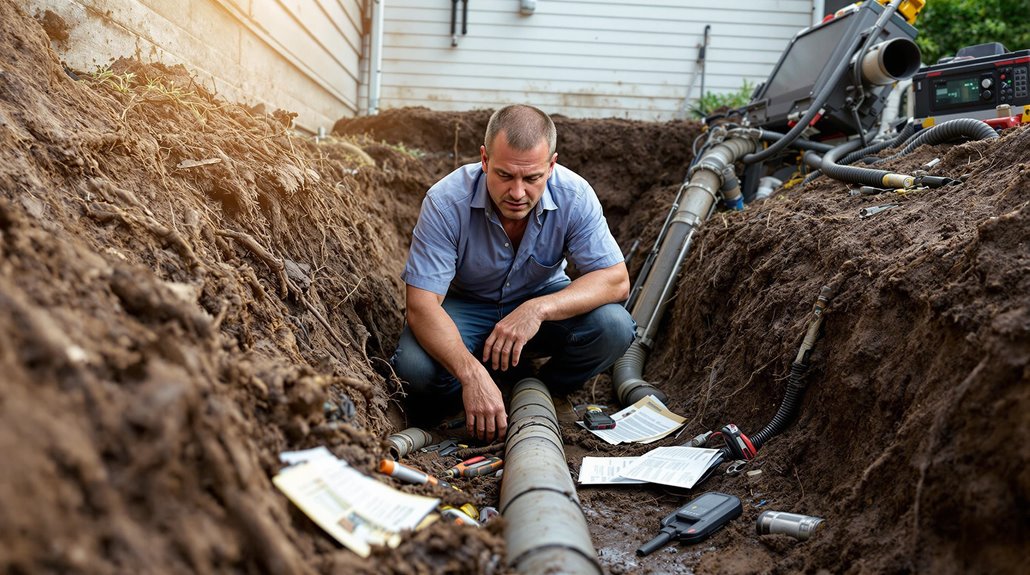
While DIY repairs can offer initial cost savings, inexperienced homeowners often underestimate the complexities of sewer line maintenance, leading to costly mistakes and subsequent professional intervention.
DIY limitations become particularly evident when homeowners lack specialized equipment and expertise necessary for accurate diagnosis and repair. Without proper tools, repairs can be ineffective and time-consuming, potentially causing additional damage to the sewer system.
When mistakes occur, the eventual cost of professional remediation often exceeds what would have been spent on professional services initially.
Professional advantages include access to advanced diagnostic tools, specialized equipment, and thorough solutions that address both immediate and underlying issues.
While professional services require higher upfront investment, ranging from $1,388 to $5,323 for standard replacements, they prevent the cascading expenses that can result from DIY attempts.
This is especially critical in complex scenarios involving extensive damage, root infiltration, or situations requiring excavation work.
The Benefits Of Consulting A Public Adjuster
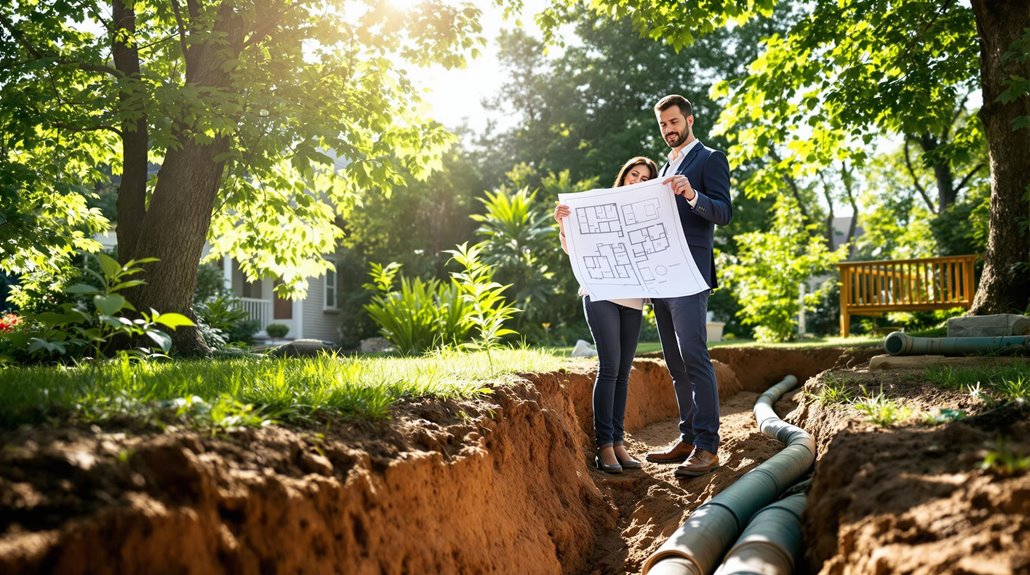
Public adjusters provide invaluable expertise in managing complex sewer line replacement insurance claims through objective damage assessment and extensive policy evaluation.
Their professional involvement typically results in higher claim settlements due to their thorough documentation and skilled negotiation with insurance companies.
Studies show that engaging public adjuster services early in the claims process can increase settlements by up to 500% for non-catastrophic property damage claims.
Expertise In Insurance Claims
When dealing with sewer line replacement claims, consulting a public adjuster can markedly improve the outcome of insurance settlements.
These professionals possess extensive knowledge of insurance policy benefits and expertly navigate the claims process on behalf of property owners. Their expertise enables thorough interpretation of policy details and guarantees all entitled coverage is properly accessed.
Public adjusters manage complex documentation requirements, compile detailed damage assessments, and present extensive repair estimates to insurance carriers.
Their objectivity and negotiation skills often result in higher settlement amounts compared to self-filed claims. Working on a contingency basis, they handle all aspects of the claim while maintaining compliance with local regulations and requirements.
This professional advocacy allows property owners to focus on addressing immediate concerns while the adjuster manages the technical aspects of the insurance claim.
With fees typically ranging 5 to 20 percent of the final settlement amount, public adjusters often prove more cost-effective than pursuing legal representation through an attorney.
Objective Damage Assessment
A thorough objective damage assessment forms the cornerstone of successful sewer line replacement claims. Professional public adjusters utilize advanced diagnostic tools and systematic evaluation techniques to document both visible and concealed damages, guaranteeing extensive coverage for restoration. Insurance claim experts can review complex cases to help determine if compensation claims have been underpaid.
| Assessment Component | Tools Used | Benefits |
|---|---|---|
| Structural Damage | Thermal Imaging | Identifies hidden issues |
| Moisture Analysis | Moisture Meters | Prevents future problems |
| Documentation | Floor Plan Apps | Supports claim accuracy |
| Cost Estimation | Database Systems | Guarantees fair compensation |
The restoration process benefits greatly from professional assessment services, as experts can determine salvageable components and necessary replacements. Their detailed reports serve as essential blueprints for the repair work, while their expertise in identifying potential hazards helps prevent additional complications during reconstruction. This systematic approach ultimately reduces financial stress and guarantees property restoration to pre-loss condition.
Streamlined Claim Process
Maneuvering the complex landscape of insurance claims requires strategic expertise, making professional public adjusters invaluable partners in streamlining the sewer line replacement process.
Through expert assistance, adjusters efficiently manage all aspects of claim documentation, ensuring accurate filing and timely submission of required paperwork.
Their claims advocacy encompasses thorough property damage assessment, detailed documentation gathering, and skilled negotiation with insurance providers.
Public adjusters handle communications with insurers, coordinate inspections, and leverage their knowledge of insurance regulations to expedite settlements.
This professional intervention transforms a potentially overwhelming experience into a structured, efficient process.
Working with public adjuster commission fees typically range up to 10% of the final settlement amount, ensuring their interests align directly with maximizing your claim payout.
Higher Claim Payouts & Settlements
Public adjusters consistently demonstrate their value through markedly higher claim settlements compared to self-managed claims. Their expertise in insurance claim strategies encompasses thorough damage assessments, policy interpretation, and skilled negotiation tactics. These professionals leverage their extensive knowledge to identify overlooked damages and maximize claim settlements while ensuring compliance with policy terms.
| Adjuster Benefits | Financial Impact | Success Factors |
|---|---|---|
| Expert Assessment | Higher Payouts | Detailed Documentation |
| Policy Knowledge | Reduced Expenses | Accurate Valuation |
| Negotiation Skills | Maximum Benefits | Strategic Timing |
| Claims Experience | Fair Settlement | Complete Coverage |
The contingency-based fee structure aligns the adjuster's interests with the policyholder's goals, motivating thorough claim preparation and aggressive negotiation. Their specialized understanding of insurance company practices enables them to counter tactics designed to minimize payouts, ultimately securing more favorable settlements for property owners. Understanding whether sewer line coverage is included in your standard policy is crucial before filing a claim, as this type of damage is often excluded.
About The Public Claims Adjusters Network (PCAN)
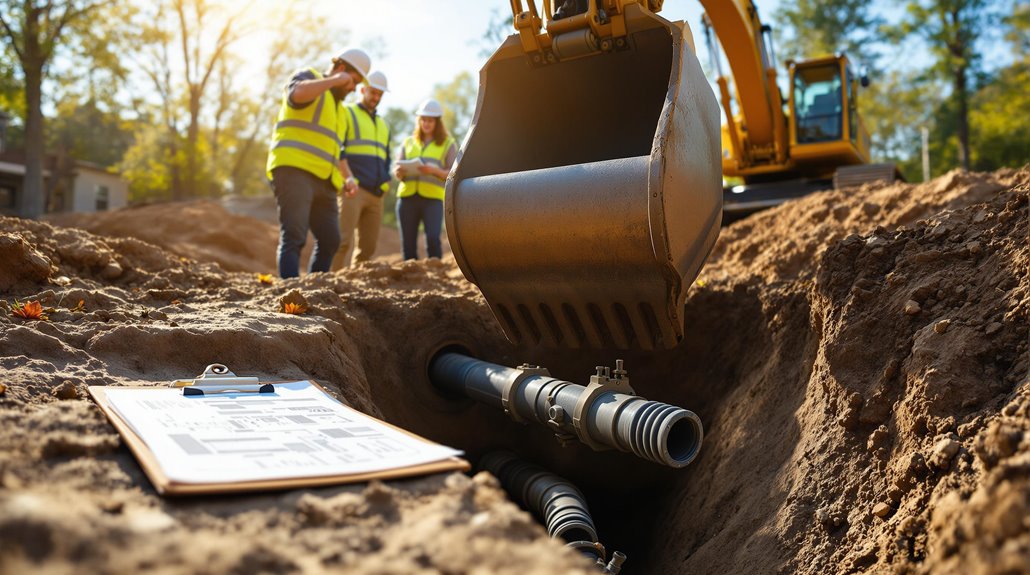
The Public Claims Adjusters Network (PCAN) stands as a professional organization providing extensive claims management services for property owners seeking expert representation during insurance disputes.
Public Adjusters within the network operate as licensed and bonded professionals, working exclusively on behalf of property owners rather than insurance companies.
PCAN's thorough service structure includes third-party administration, independent adjusting services, and specialized trial preparation support. The organization maintains a 24/7 call center and offers subrogation services to guarantee continuous client assistance.
Their catastrophe team specializes in managing large-scale disaster claims, while dedicated units handle specific claim types with precision.
With experience managing over 10,000 claims across various sectors, PCAN operates on a contingency fee basis, requiring no upfront payments from clients.
The network's adjusters conduct meticulous damage assessments, provide detailed documentation, and utilize advanced claim management systems to maximize settlement outcomes for property owners.
Frequently Asked Questions
How Long Does a Replaced Sewer Line Typically Last Before Needing Maintenance?
Like veins beneath the earth, modern sewer lines exhibit varying lifetime expectancy ranges, with properly installed pipe materials lasting 50-100 years, though maintenance inspections are recommended every 2-3 years.
Can I Finance or Get Insurance Coverage for Sewer Line Replacement?
Multiple financing options exist for sewer line replacement, including home improvement loans, plumber financing, and credit solutions. Insurance coverage through homeowners' policies and utility protection plans provides additional financial safeguards.
What Time of Year Is Best for Replacing a Sewer Line?
Spring offers ideal conditions for sewer line replacement, with softer soil and minimal landscaping impact. Winter presents significant challenges, including frozen ground, increased costs, and potential weather-related construction delays.
Are There Government Assistance Programs Available for Sewer Line Replacement?
Money doesn't grow on trees, but government funding exists through USDA Rural Development grants, DWSRF programs, and infrastructure initiatives, offering up to $4,000 for qualified home repair involving sewer lines.
How Soon Can I Landscape Over a Newly Replaced Sewer Line?
Proper landscape timing requires waiting several weeks to months for soil settling after sewer line replacement. Light landscaping can begin once soil stabilizes, while heavy landscaping should wait for complete settlement.
References
- https://dirtcheapsewer.com/how-to-choose-the-best-sewer-line-replacement-method/
- https://www.angi.com/articles/how-much-does-sewer-line-replacement-or-repair-cost.htm
- https://www.plumbingdoc.net/the-risks-of-diy-sewer-repair/
- https://www.drainmasterohio.com/how-to-prepare-for-a-sewer-line-replacement/
- https://nwsewer.com/sewer-line-repair-methods/
- https://www.expresssewer.com/blog/full-list-of-trenchless-technology-methods
- https://nwsewer.com/common-sewer-line-repair-methods/
- https://www.jdservicenow.com/blog/types-of-trenchless-sewer-repair/
- https://alwaysaffordableplumbing.com/blog/effective-sewer-repair-techniques/
- https://superbrothers.com/blog/cost-to-repair-sewer-line-2023-options-affordable-services/
